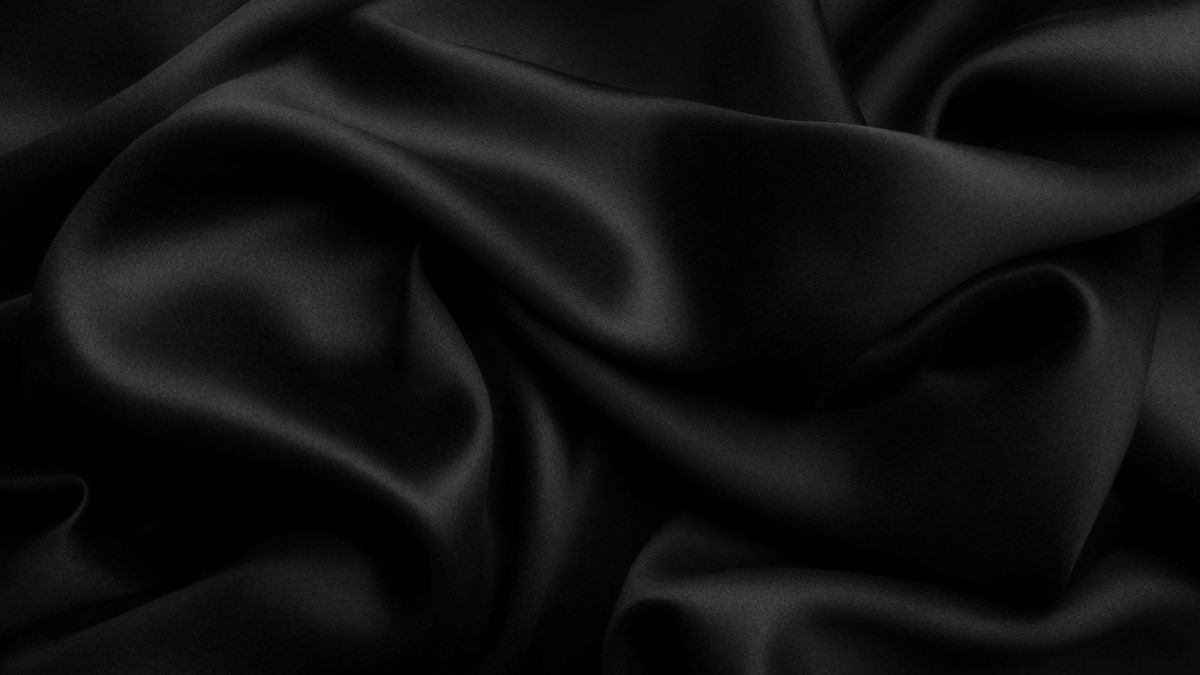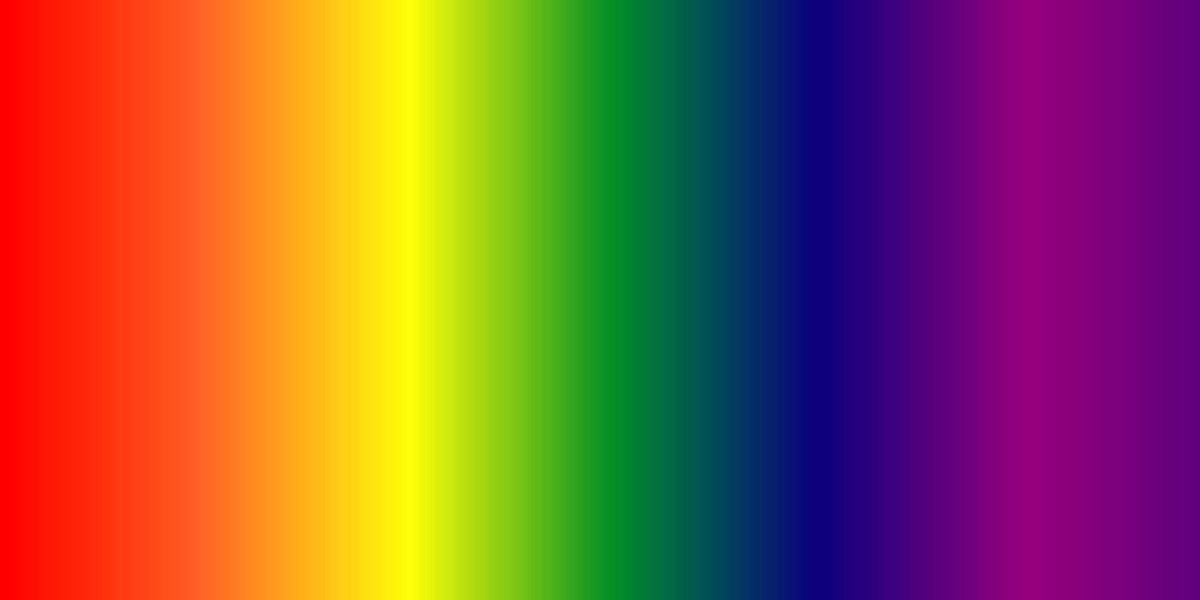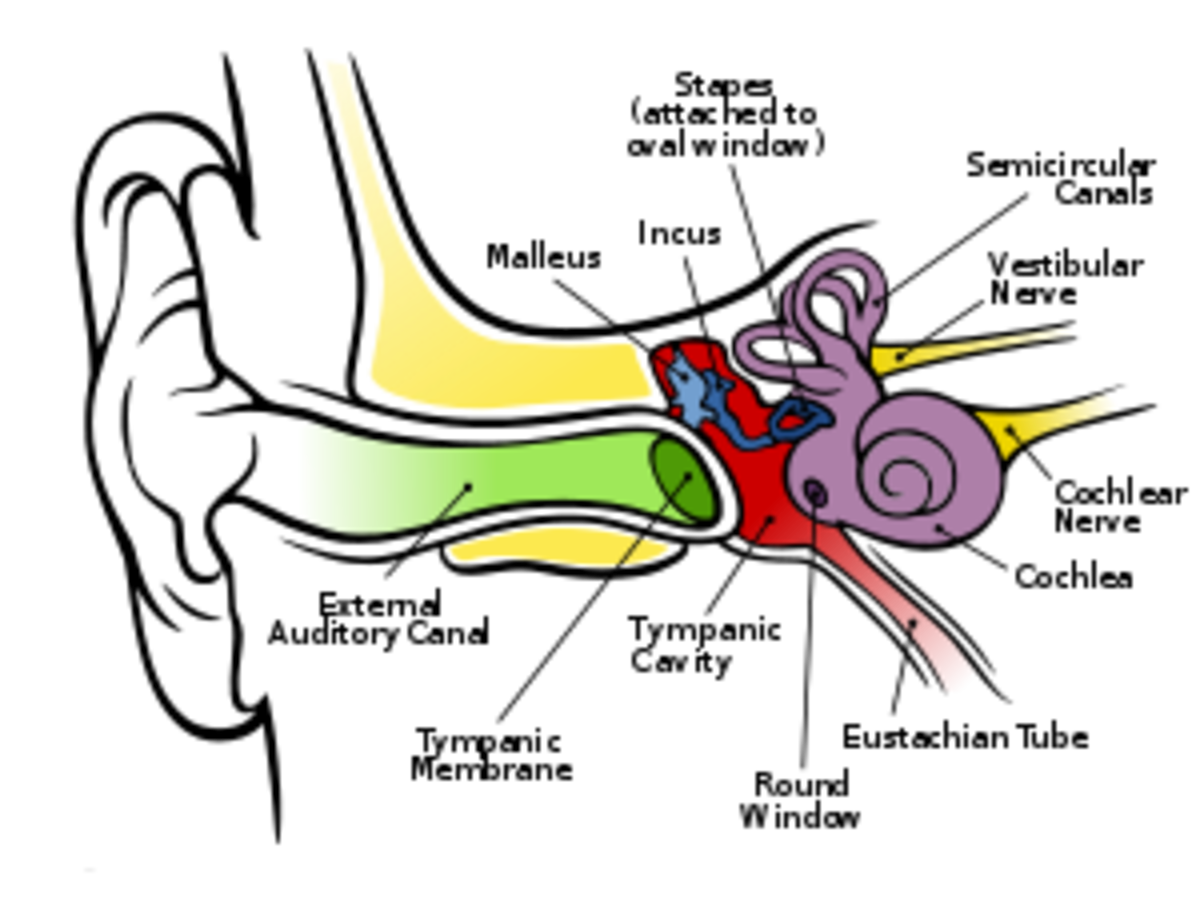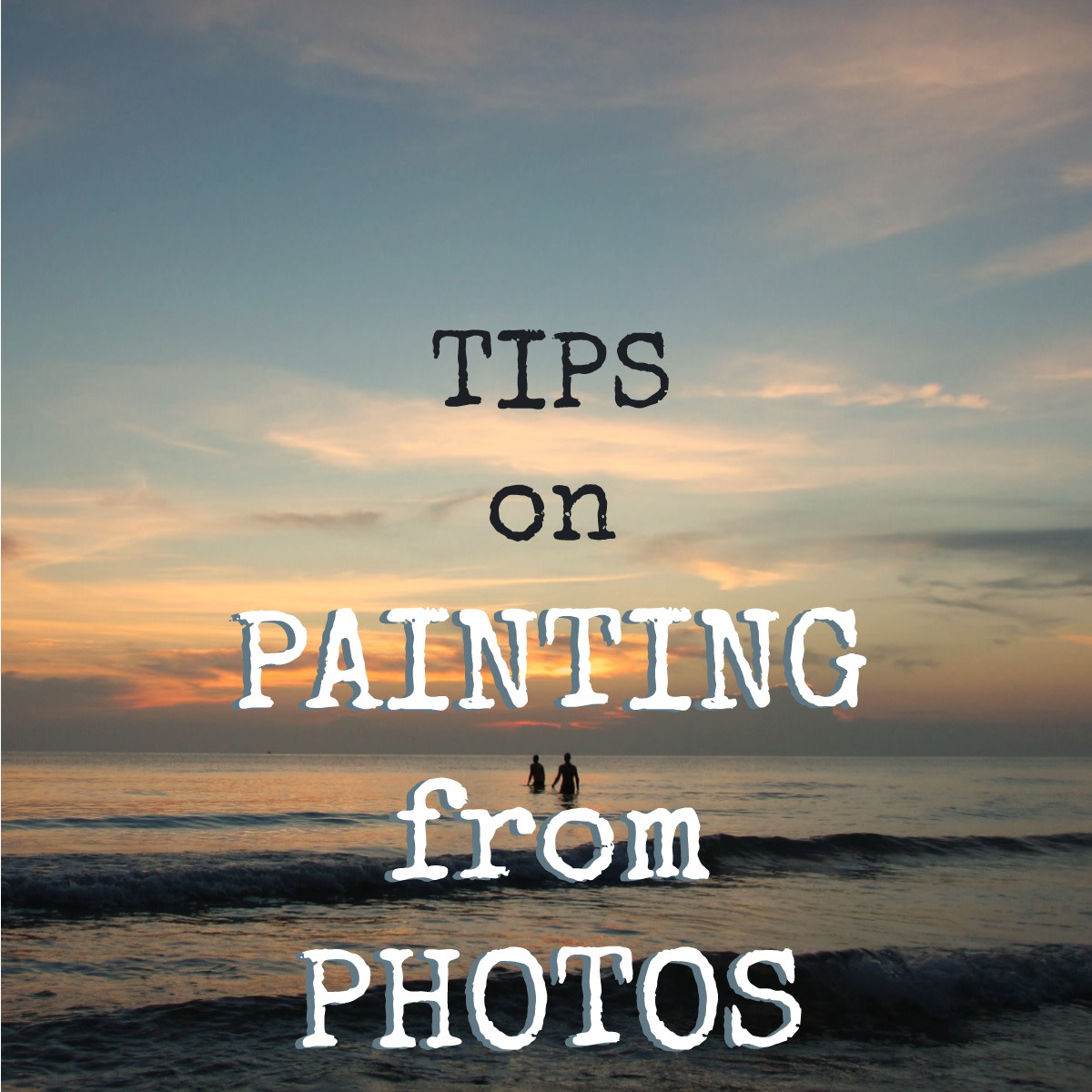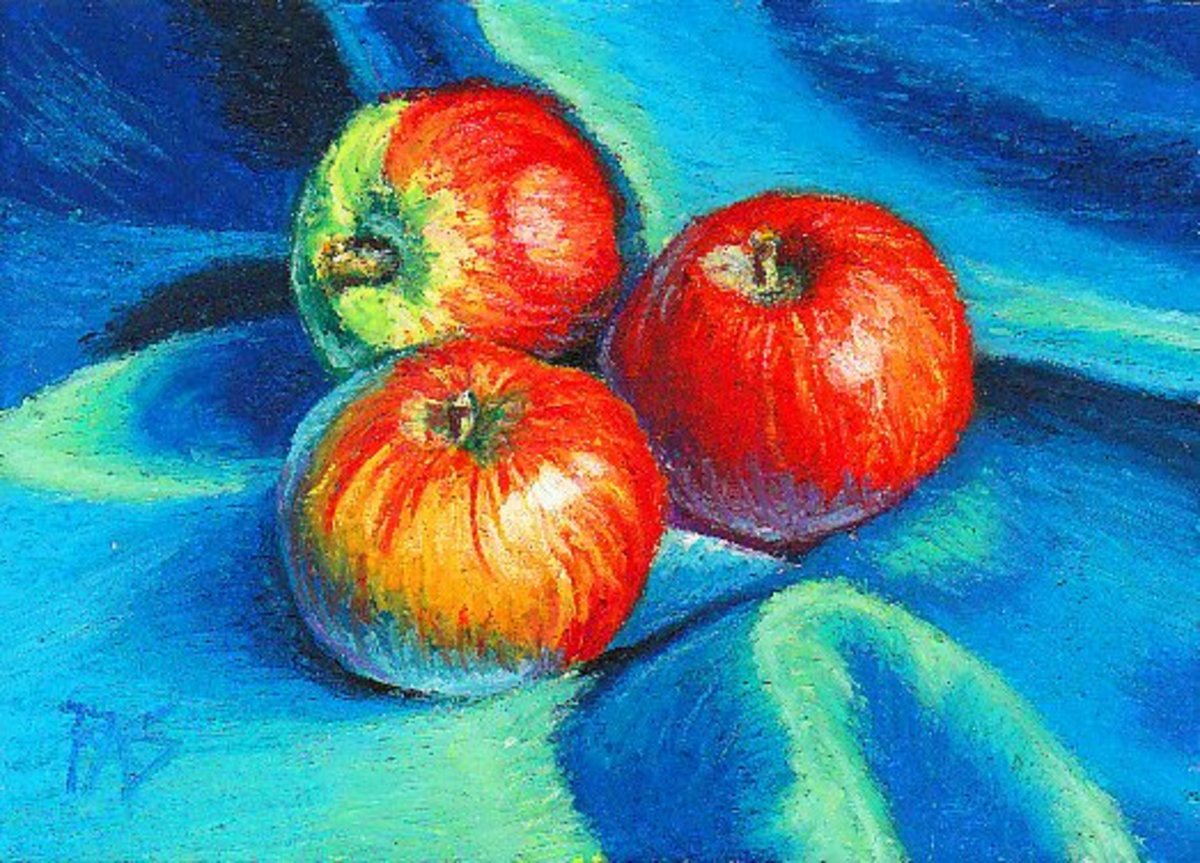Painting the Rainbow
The Finished Item
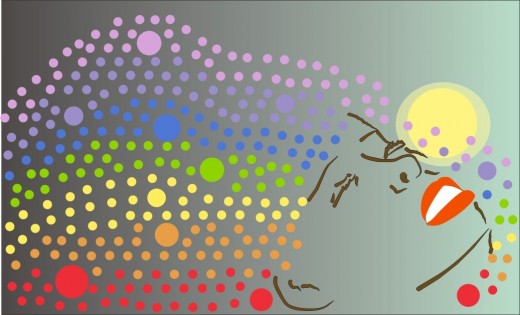
Folklore and Mythology
Rainbows have always fascinated mankind. Those great transparent and shimmering belts of colour in the sky that often appear after a spell of heavy rain are nothing if not magical. The colours of the rainbow were always consistent; so from ancient times, natural philosophers knew that its appearance had to have an underlying cause.
It was little wonder that the rainbow became mythologized and associated with extraordinary happenings, e.g. the rise and fall of kingly dynasties, the signpost to a pot of gold, and so on. The rainbow also entered folklore and literature. In the book of Genesis, God sent the rainbow as a promise that he would never again send a major Flood to mankind. In Norse mythology, the rainbow was a bridge to heaven that only warrior heroes and royalty could cross. In Greek mythology, Iris was the goddess of the rainbow and the sister of the very spooky harpies.
Colours of the Rainbow
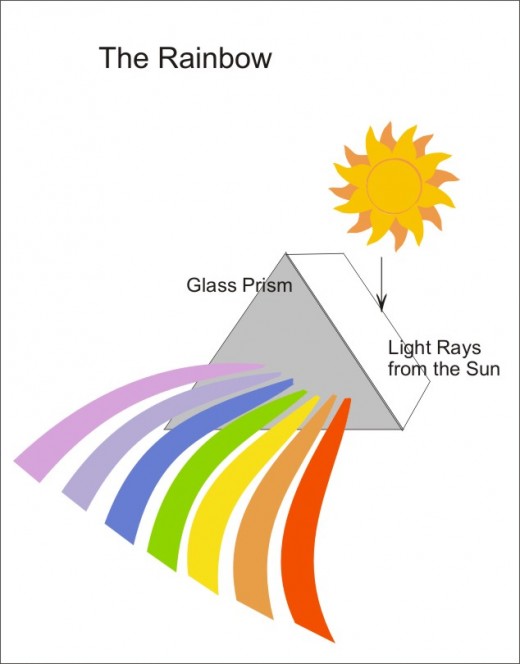
Objective and Subjective
For centuries, philosophers argued about the nature of light and colour, philosophers like Empedocles and Democritus, Plato and Aristotle. In more recent times, artists and scholars argued about the exact colours of the rainbow. The analysis by prism of Sir Isaac Newton in the 1660s demonstrated that a single beam of sunlight is composed of rainbow colours, that what we see in the sky after a shower of rain is simply sunlight refracted or bent by droplets of water still suspended in the air. He also laid down what we now accept as its seven colours; red, orange, yellow, green, blue, indigo and violet. Since this analysis came close to many earlier analyses and artistic depictions, the work of the scientist would seemingly have scuppered all arguments. However, it had not.
The chief challenger of the theories of Newton was actually the German poet, Johann von Goethe. This may seem odd to us, but until the end of the eighteenth century, modern thought had not yet emerged to the point where earth science was considered a branch of study distinct from philosophy. Also, a raft of other writers and artists supported van Goethe; like him, they theorized on the subjective perception rather than the objective, physical nature of colour. One example is that smoke appears yellow or reddish against a white background while it appears blue against a dark of black background. Von Goethe took his research very seriously and compounded it into the Theory of Colours, a monumental volume that is still in print. In a lecture of 1855, philosopher Helmholz declared: we never perceive the objects of the external world directly. On the contrary, we only perceive the effects of these objects on our own nervous apparatus.
My First Effort
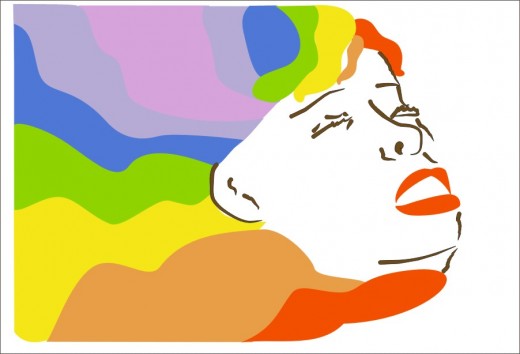
Celestial Phenomenon, Terrestrial Problem
Subjective or objective, I fell in love with the beauty of the rainbow and wanted to create my own image. Utilising the theme of Greek mythology was a no-brainer but the challenge of how to depict Iris nearly defeated me. I looked at many, many images of the goddess and discounted them all, the older depictions being too stiff and classical, while the contemporary, cartoon-like images were somehow too twee. In addition, all my attempts at recreating the beauty and magic of the celestial phenomenon on paper ended in a multicoloured mess. The problem with most rainbow images is that they are too static, flat bands of unsubtle colour, whereas the rainbow is a vibrant and shimmering phenomenon. How could I capture such delicacy and transparency with meagre drawing skills and rudimentary tools? In a weird way, computer drawing software makes an excellent tool for painting the rainbow, not least because it “paints” with light, the same stuff that nature uses. . As ever, Ray Lichtenstein came to my rescue, most especially with his poster, Shipboard Girl, (1965) in which the subject is tilting her face against a backdrop of sky and sea. Meanwhile, her tresses are blown about by the wind. Her expression captured the abandon to the elemental world that I required, while I relished the opportunity to transform the strands of hair into shimmering, rainbow colours. First, I “blocked out” my drawing in solid colour, using the freehand drawing tool to capture the outline of her features. Next, I drew bands of rainbow colour radiating back from her face to capture the sense of movement that I wanted. I was almost there, but the image still did not capture the translucency and transience of the rainbow in the atmosphere.
Almost There...
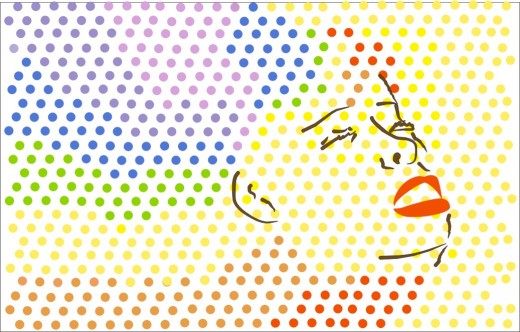
The Fun Bit
In my earlier feature, Draw Like Lichtenstein, I explained how the artist used arrays of polka dots on a 60-degree angle to create shading in his drawings, and showed the reader how to create similar arrays, using drawing software. One of the features of computer vector images is that you can pick up individual portions of the drawing and use them as templates to assist in laying down planes of colour in other images. Using my array of polka dots, I “corralled” each area with the various coloured portions of my new drawing, selected all the dots and transformed them to the colour that I required. This bit I did rather quickly and found quite fun to do. The use of dots breaks down the “hard edge” of the planes of colour, since the extremity of each edge wavers into the next colour. I actually had fun blending the banks of different colours together – another useful feature of the dots - weaving orange with yellow, blue with green, and so on. Making each shade in the picture the same computer code, fore example, Pantone 21, unifies the drawing, like the red of the rainbow and of Iris’s lips. The image looked like this, but the image still needed more touches in order to achieve the result that I really wanted.
First, I removed all of the dots that did not form part of the rainbow, that is, on the face and on the sky. Next, I created a sun of two circles of yellow, the darker one being the same colour as the yellow of the rainbow. Then, I tilted the head so that the cheek touched the sun. I created a backdrop of grey blended with pale blue and placed it behind the image. I was astonished at how the individual colours lit up, especially the yellow. I was still not satisfied, however, with the blending of the banks of colour so using my eye, I reorganised the dots until they seemed to flow from the head of the goddess. By now, the 60-degree feature of the dots was off kilter, so I evened out the blank areas by enlarging the occasional dot. This added further interest across the image. Finally, to balance the right of the painting with the left, I pulled the rainbow colours around the neck. Once more, I was astonished by the contrast between the back-colours, especially at the violet dots against the sun. There are many more ways to “tweak” the image, for example, by putting stars and other cosmic symbols in the wake of the sun. However, my first basic rainbow is in place and I look forward to creating many more Lichtenstein-inspired storyboards in which to place it.
Sources
Colour and Culture: Practice and Meaning from Antiquity to Abstraction by John Gage, Thames and Hudson
The Penguin Dictionary of Classical Mythology by Pierre Grimal
Lichtenstein Posters, Prestel Publishing
Theory of Colours by Johann von Goethe, MIT Press

